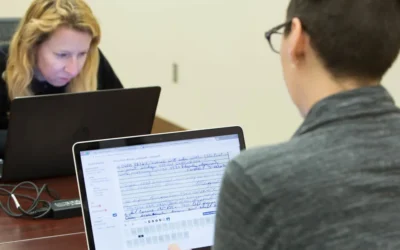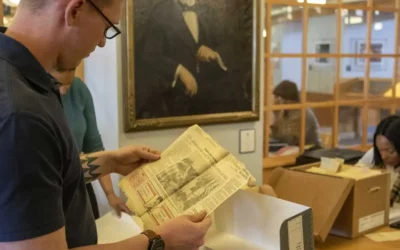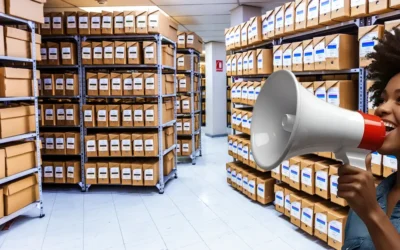Engaging Online Audiences with Records of Enduring Value
Margot Note
Archival institutions are accustomed to adapting and reshaping their collections and finding new ways to present them to their public. As digital collections become more common, institutions need to think carefully about engaging with their virtual audiences.
While archivists can easily observe their physical visitors using archival collections, understanding how online audiences engage with collections can be challenging. Publishing digital materials through a collections management system (CMS) is only the first step in reaching online audiences.
Knowing Your Audience
Making a collection widely accessible is the next step, but archivists must place known and potential users at the center of their collections to engage people online. Critical to this action is knowing who the audience is and understanding their needs. A Web-based CMS makes collections accessible, explorable, and enjoyable, not just for those who visit a repository, but for everybody with Internet access. An archival solution can reveal hidden collections to the world. Sharing collections digitally encourages more people to visit. Online publishing is a powerful way to build awareness about physical collections. A blend of online, social, and in-person interactions drives effective engagement between the community and collections. While some users prefer to visit and search through manuscript boxes themselves, digital archives are increasingly helping archivists satisfy users’ needs of all types, saving both researchers and archivists time and answering questions more efficiently.
For example, archivists could use a CMS to create an easy-to-explore, interactive timeline, providing a resource that places items from the collection within their proper historical context. Records, notes, programs and posters, and photographs, among many materials, can be digitized, uploaded into the collections database, and curated online.
An Open Classroom
A CMS also offers the potential to broaden educational horizons. Students and teachers from anywhere in the world can consult a vast array of historical materials at any time. Online collections provide new avenues for lifelong learners too. Archival professionals can bring the materials together, describe them, and arrange them in a storytelling format, allowing users to explore collections, immerse themselves in the narratives behind them, and build their virtual collections to their needs. By reaching people on their device or smartphone, institutions can interact with new audiences who may never have thought of themselves as archival researchers. Publishing a collection online extends the reach of the physical objects, documents, and artifacts it contains.
Many organizations have limited storage and exhibition space; lack of physical space of any kind is an enduring issue for institutions. Online collections open a realm of possibilities by freeing institutions from the buildings’ restrictions that house them. Digital collections give archival materials, often stored in secure, preservation-safe conditions, new life.
Smaller archives benefit from a more prominent online presence. Putting aspects of their collections online provides a taste of the overall experience they offer. An institution’s digital identity can increase exposure to new audiences, which creates curiosity and raises the collection’s profile.
A CMS can complement an archives, enabling visitors to navigate the collection online, find related works, and download information and content from the site. Website visitors can access high-resolution images of one-of-a-kind records, along with concise descriptions. Even if not all archival collections can be digitized due to costs, resources, and copyright restrictions, archival repositories can publish inventories, descriptions, and findings aids online to give users around the world an idea of the extent of their holdings.
Emerging Technology
It is hard to imagine how the past few decades’ far-reaching technological changes will unfold in the coming years. As emerging technology continues to impact the world around us, archival organizations are seizing new opportunities to present their collections in innovative ways and capture new audiences. Online collections are central to the new era of audience engagement, whether that audience is on the other side of the world or sitting in the nearest reading room.
The digital age offers opportunities for archives, evidenced by enhanced digital discoverability, outreach, and services. Collections management systems help archivists fulfill their missions to identify, preserve, and make available records of enduring value. A robust CMS improves archival accessibility, resulting in researchers’ increased satisfaction, building a compelling future for archives everywhere.
Margot Note
Similar Posts
Collaborative Archival Relationships
Collaborative projects are instrumental in showcasing how archival collections can benefit various organizational departments.
Informational, Evidential, and Intrinsic Values within Archives
Archives provide authentic, reliable information and hold values that reflect their functions and uses; informational, evidential, and intrinsic.
A Sustainable Archives
Archivists prioritize sustainable practices and policies, rooting their work in ethics of care, often preferring digital processing and preservation
Archival Branding and PR Strategies
Archivists who adopt branding and PR strategies both safeguard historical treasures and contribute to their organizations’ evolution.




Leave a Comment
Comments are reviewed and must adhere to our comments policy.
0 Comments